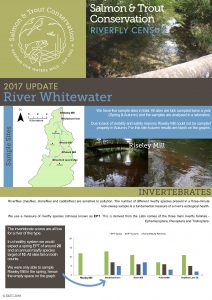Rural Hart Association update
The Rural Hart Association (RHA) has made very good progress over the summer. The RHA has decided to concentrate its resources on the single issue of regeneration of Fleet town centre. The RHA set out to demonstrate that it is feasible to regenerate Fleet Town Centre with a mixed-use development (residential, retail and leisure), which would provide housing as well as reviving the commercial viability of Fleet as Hart District’s largest town.
Regeneration of Fleet town centre
Regeneration of Fleet is of vital importance because Hart District Council’s justification for a New Town rests on their assertion that regeneration of Fleet can’t be achieved.
In more detail the argument runs like this:
- The National Planning Policy Framework (NPPF) requires that Brownfield sites are used to their maximum potential before building on greenfield land
- The NPPF also requires that councils regenerate their Town Centres. NPPF paragraph 86 says “Planning policies and decisions should support the role that town centres play at the heart of local communities, by taking a positive approach to their growth, management and adaptation”
- Hart District Council admits that Hart District is failing commercially (because there is a growing net outflow of retail and leisure spend from the district) and the Local Plan states (paragraph 66) that “the challenge for Fleet will be to secure investment so that it can compete with the comparison towns in neighbouring districts”
- But Hart District Council has made no attempt to secure the investment needed to regenerate Fleet. When challenged on this at the January council meeting Hart District Council stated that regeneration of Fleet was an “impossible pipe-dream”.
In May, RHA appointed Lambert Smith Hampton to undertake a
Design Report to investigate the feasibility of a mixed-use regeneration of Fleet’s Hart Shopping Centre.
This study is now complete and its main conclusions are:
- Hart Shopping Centre can be regenerated to provide the same retail and parking space, as well as 950 square metres of community space, a multi-screen cinema and 371 flats (of 1, 2 and 3 bedrooms). The whole area would become modern and desirable, and the flats would provide a tremendous boost to the viability of the shopping centre.
- The flats would be ideal for first time buyers and elderly people because they are close to the shops and the station – the Design Study has allowed for the full 40% affordability provision.
- The return on investment for the developers looks good, and Lambert Smith Hampton has already generated serious interest from several potential developers. In addition the site owners approve of the scheme and discussions between the site owners and the developers are scheduled for late in the year.
In summary, RHA has demonstrated that Hart’s claim that Fleet cannot be generated is utterly wrong, and has resulted in a Local Plan which condemns Fleet in particular (and the whole Hart in general) to long-term economic decline.
Hart Local Plan – Examination in Public
The Rural Hart Association is now fully prepared to play its part in opposing a New Town at the Examination in Public of Hart District Council’s Local Plan which starts on 20 November.
We hope that on the basis of this Study, the Inspector will rule that the Local Plan is unsound and that he will recommend that the New Town is removed from the Plan and that a large-scale regeneration of Fleet is undertaken instead. The regeneration of Fleet will pave the way for a bright future in which Fleet becomes a modern, vibrant and commercially successful town surrounded by beautiful countryside and rural villages.
Over the next few days Lambert Smith Hampton will submit the Design Study to Hart District Council, and ask the Council to cooperate in its implementation. Lambert Smith Hampton will also submitted the Design Study to the Inspector in preparation for the Inspector’s review of the Spatial Distribution of Housing (Matter 4) and Town Centre and Retail (Matter 10). In parallel some Fleet members of the RHA will submit the Design Study to Fleet District Council, whose Neighbourhood Plan supports mixed-use developments in the Town Centre.
The We Heart Hart blog also provides a full commentary of the progress of the Local Plan and it is well worth reading.
Call for funding
Thank you to all those who have contributed so generously to this work of the RHA so far. However RHA is still about £8,000 short of the funds that we think we will need for Lambert Smith Hampton to represent us at the Inspection.
The RHA, and I personally, would be very grateful if those who have not yet contributed would now make a donation. Please make your donation, either
- via BACS to the Rural Hart Association bank account
Sort Code: 40 21 27
Account Number: 11581341
- or you can send cheques (made payable to The Rural Hart Association) to the Treasurer, Southview Cottage, Heckfield, Hook, RG27 0JY or contact the Treasurer via email.
I think that we have built a very strong case, and I believe that we have a good chance of preserving all of our green fields for many decades to come.
Thank you all for your continuing support.
Tristram Cary
Chairman – Rural Hart Association

